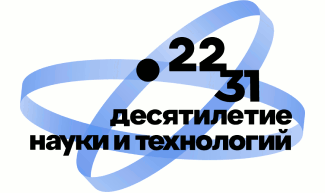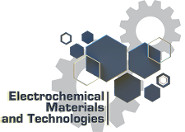The latest technology for reprocessing the spent nuclear fuel is created in Urals
Yuri Zaikov, the scientific supervisor of the Institute of High Temperature Electrochemistry of the Ural Branch of the Russian Academy of Sciences and the director of the pyrochemical processing of the SNF of the Breakthrough project , spoke about the progress of work.
-How did your institute become a member of the Breakthrough project?
In April 2021,The Rosatom State Corporation and the IHTE UB RAS made a state contract for the creation of technology and equipment for the pyrochemical reprocessing of SNF from fast neutron reactors. However, we have been conducting research in this direction together with our colleagues from the Ural Federal University and the ROSATOM Research Institute for almost six years. Today, the institute acts as a scientific coordinator of pyrochemistry works included in the federal project “Development of technologies for two-component nuclear energy with a closed fuel cycle” of the comprehensive program “Development of equipment, technologies and research in the field of atomic energy use in the Russian Federation for the period up to 2024”.
It was not a coincidence that the Ural electrochemists were involved in the creation of a new technology for reprocessing the spent nuclear fuel. Research of the fundamental properties of molten salts and the processes occurring in them is a traditional direction of our institute. We have a good experimental base, high competencies of our employees, and in scientific terms, we are significantly superior in a number of areas. I mean the study of the physicochemical properties of salt melts, the kinetics and thermodynamics of electrode processes. As for technologies and their hardware design, we are inferior to our foreign partners, but this is a temporary phenomenon. In cooperation with the Rosatom State Corporation, we have every opportunity to become world leaders in the pyrochemical processing of spent nuclear fuel.
– How important is this program for Russia?
– The nuclear industry is one of the main in the economy of the Russian Federation. Rosatom continues to build nuclear power plants in different countries, maintains the built ones, trains specialists, and supplies nuclear fuel. In the creation of fast neutron reactors, namely, the BREST-OD-300 reactor plant belongs to this type, our country has advanced the farthest. There are research reactors on fast neutrons in the United States and in France, but the industrial reactors are only in Russia, namely in the city of Zarechny, Sverdlovsk region, they supply electricity to the industry and the population of the region. In general, fast reactors are much safer and more economical than conventional reactors. The use of dense nitride uranium-plutonium nuclear fuel and lead coolant makes it possible to operate in an equilibrium fuel mode, when the fuel – plutonium – is produced in the same amount as it burns. The accumulated plutonium from spent nuclear fuel is used to make new batches of fuel for the BREST, which is fed only with depleted uranium – the cycle is closed. Environmental safety in a closed fuel cycle is achieved due to the technologies of fuel regeneration and refurbishment, based on the purification of spent nuclear fuel from fission products and the introduction of depleted uranium into the purified mixture. In this case, the most dangerous radioactive substances – minor actinides – as part of the regenerated fuel are returned to the reactor, where they are burned.
– What method of the SNF reprocessing do the Ural electrochemists offer?
– We are developing pyrochemical technology (from the Greek “pyro” – fire), which uses reactions that take place at high temperatures. Other “nuclear” countries are also actively involved in the creation of such technologies. Perhaps, colleagues from South Korea, the United States and China have made the most progress in this matter. The SNF from conventional reactors undergoes hydrometallurgical processing. However, highly enriched fast reactor fuel cannot be processed in aqueous media. More precisely, this can be done only after a long exposure, for 5-7 years, which is economically unprofitable. Therefore, we suggest using molten salts – lithium and potassium chlorides and their mixtures. Salt melts are very resistant to radiation exposure and make it possible to work with highly active SNF. First of all, it is necessary to separate the most radioactive fission products by a pyrochemical method and obtain a low-level fuel. And then it can either be processed using traditional water methods, or the entire cycle can be completed using pyrochemical technologies.




